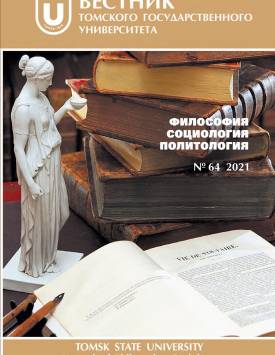Two Teachings, Two Ways of Life: Anastasian and Roerich Settlers in the Countryside
Several new religious movements (NRMs) imply certain distancing from civilization and society; due to this, some of their followers relocate from cities to the countryside. Perceptions and practices common for most NRMs may be based on fundamental ideological differences, and the settlers’ way of life directly depends on the teachings they follow. We have recorded striking differences in the ideology and life patterns of two large-scale and significant Russian NRMs: The Ringing Cedars of Russia, or Anastasianism, and Roerichism - a movement uniting followers of Nicolas and Helena Roerich and their teachings. (1) Values and lifestyles. In Anastasianism, a person can create paradise in their ancestral estate (family homestead) rather than wait for death to attain it. Anastasians focus on the family and activity pertaining to the arrangement of their house and land. In Roerichism, the purpose of existence is transition to higher worlds, which implies personal growth and spiritual development. Roerich’s followers settle closer to nature to achieve harmony of spirit and contribute to culture, which should facilitate their rebirth in a better world. (2) Potential for the development of the area. Anastasians establish family homestead settlements in vacant areas. It is assumed that the homestead will become home for all future generations of the family. Roerich’s followers move to existing settlements connected with the life of the artist and his family. They do not seek to “bind” their children and grandchildren to the area but strive to prevent the possible destruction of the “place of power” important for them. 3) Relations with the local population. Proponents of both teachings are alienated from the host community. Anastasian settlements are isolated from the surrounding localities, while Roerich’s followers keep aloof from the other villagers. Both are often perceived by locals as eccentrics spoiled by urban life or as sectarians. Anastasians find no understanding among the locals and often annoy them with their alien and seemingly irrational behavior, lifestyle and thinking. Roerich’s followers are criticized for being inappropriately demanding of conditions, as well as for unconventional approaches to education. 4) Prospects. Anastasians face problems (informal construction, lack of understanding on the part of local residents), which can be resolved only through institutionalizing their movement and the settlements they have established. They are putting a lot of effort into legitimizing their position. Roerich’s followers live legally in existing settlements, and their social activities are more understandable to local residents. At the same time, their focus on the spiritual quest entails uncertainty regarding the further development of the community.
Keywords
Anastasians, family homestead settlements, Roerichism, territorial development, rural areasAuthors
| Name | Organization | |
| Pozanenko Natalia N. | natalia.pozanenko@gmail.com | |
| Pozanenko Artemy A. | National Research University Higher School of Economics | apozanenko@hse.ru |
References

Two Teachings, Two Ways of Life: Anastasian and Roerich Settlers in the Countryside | Tomsk State University Journal of Philosophy, Sociology and Political Science. 2021. № 64. DOI: 10.17223/1998863X/64/15
